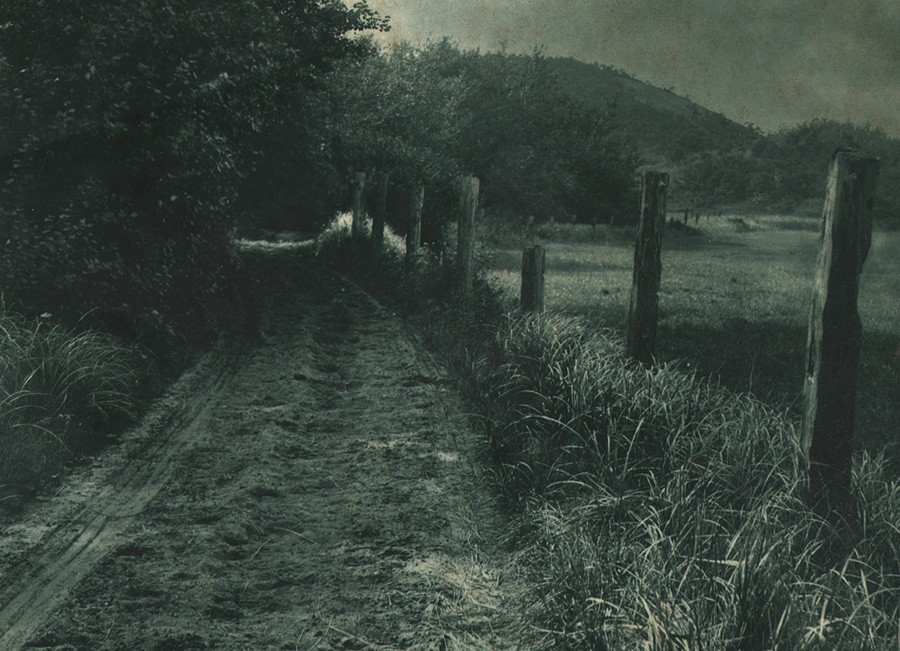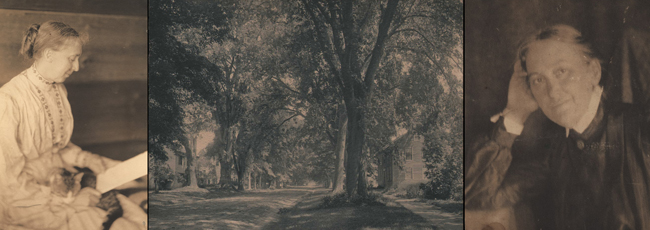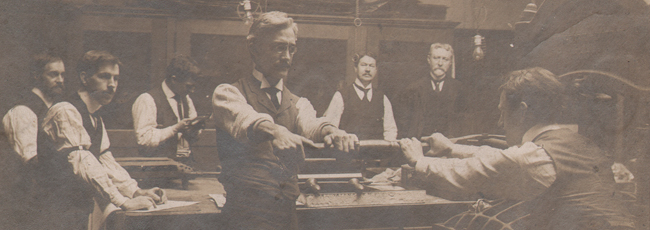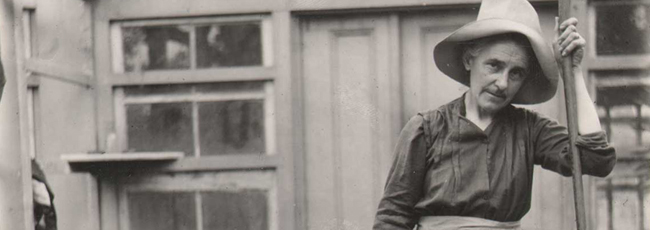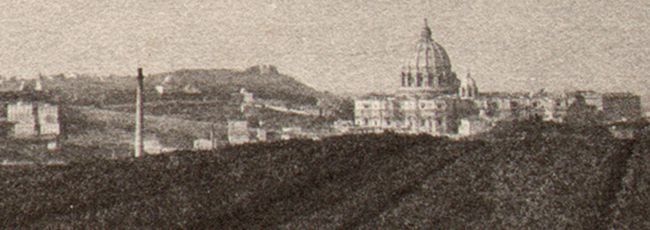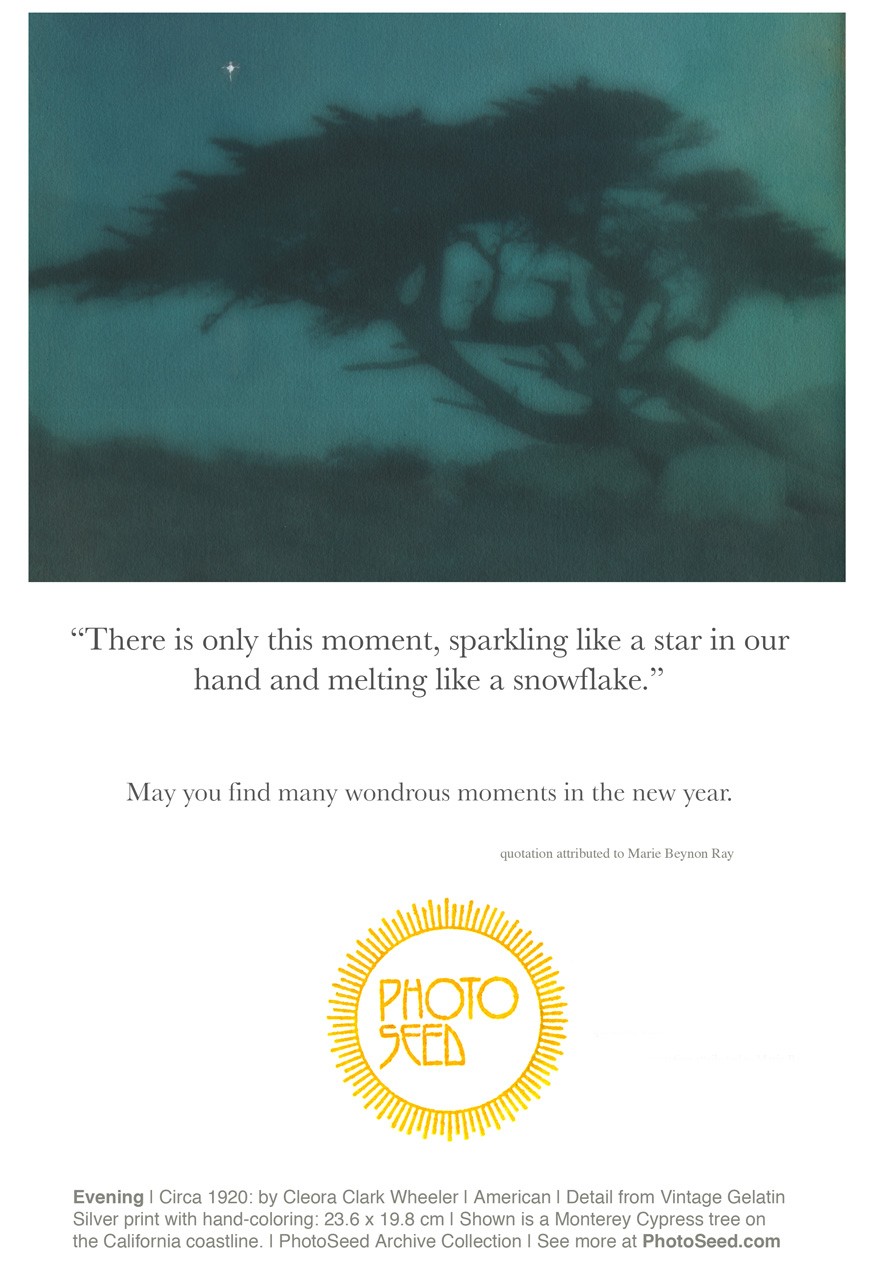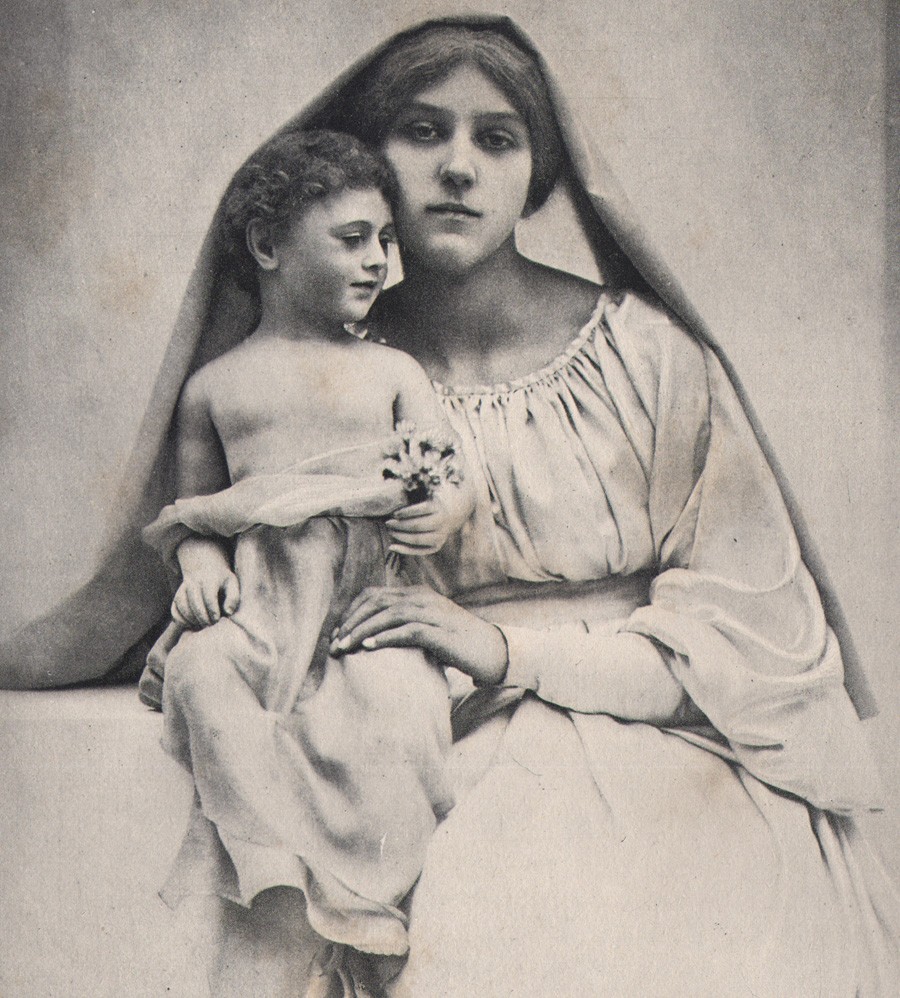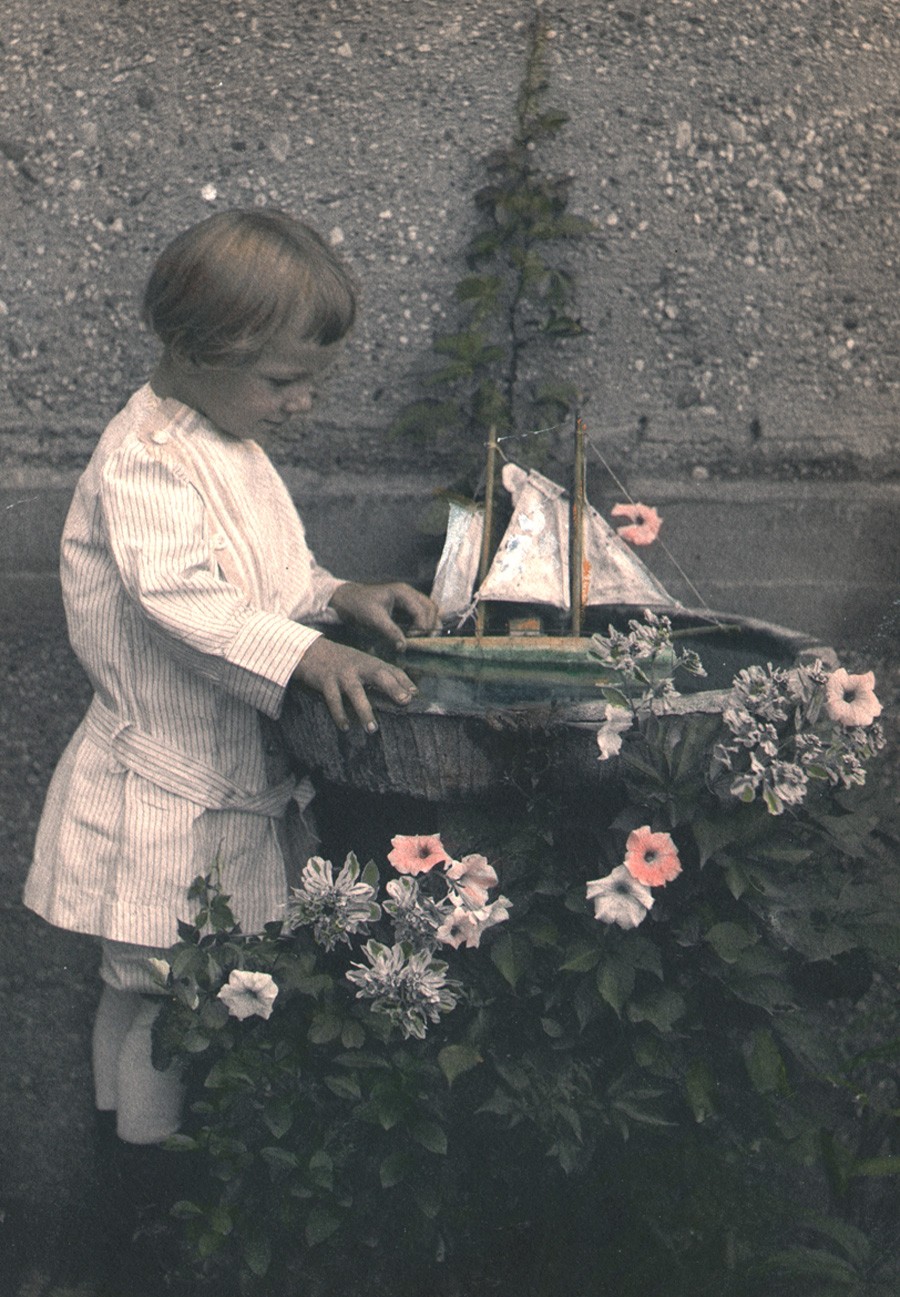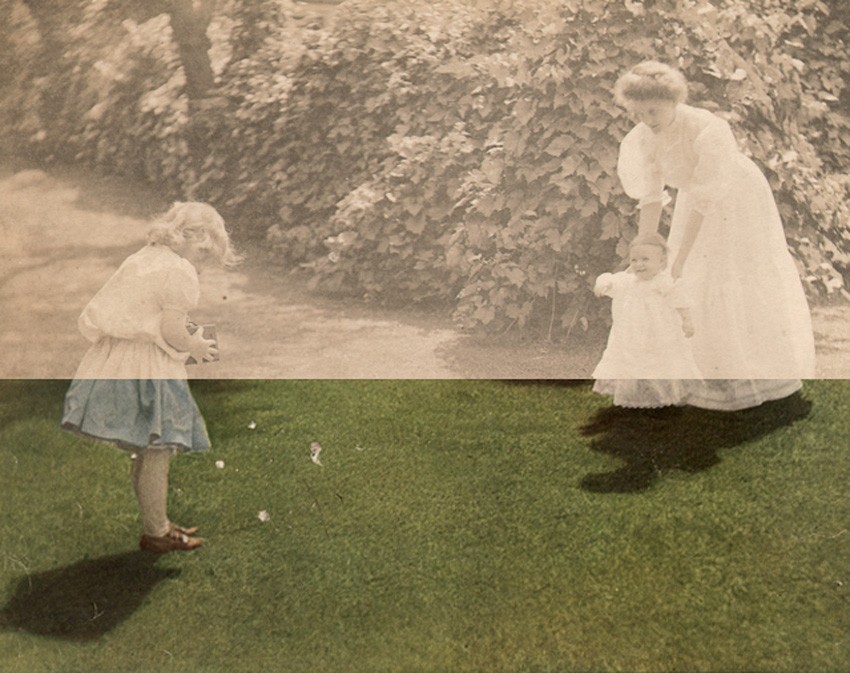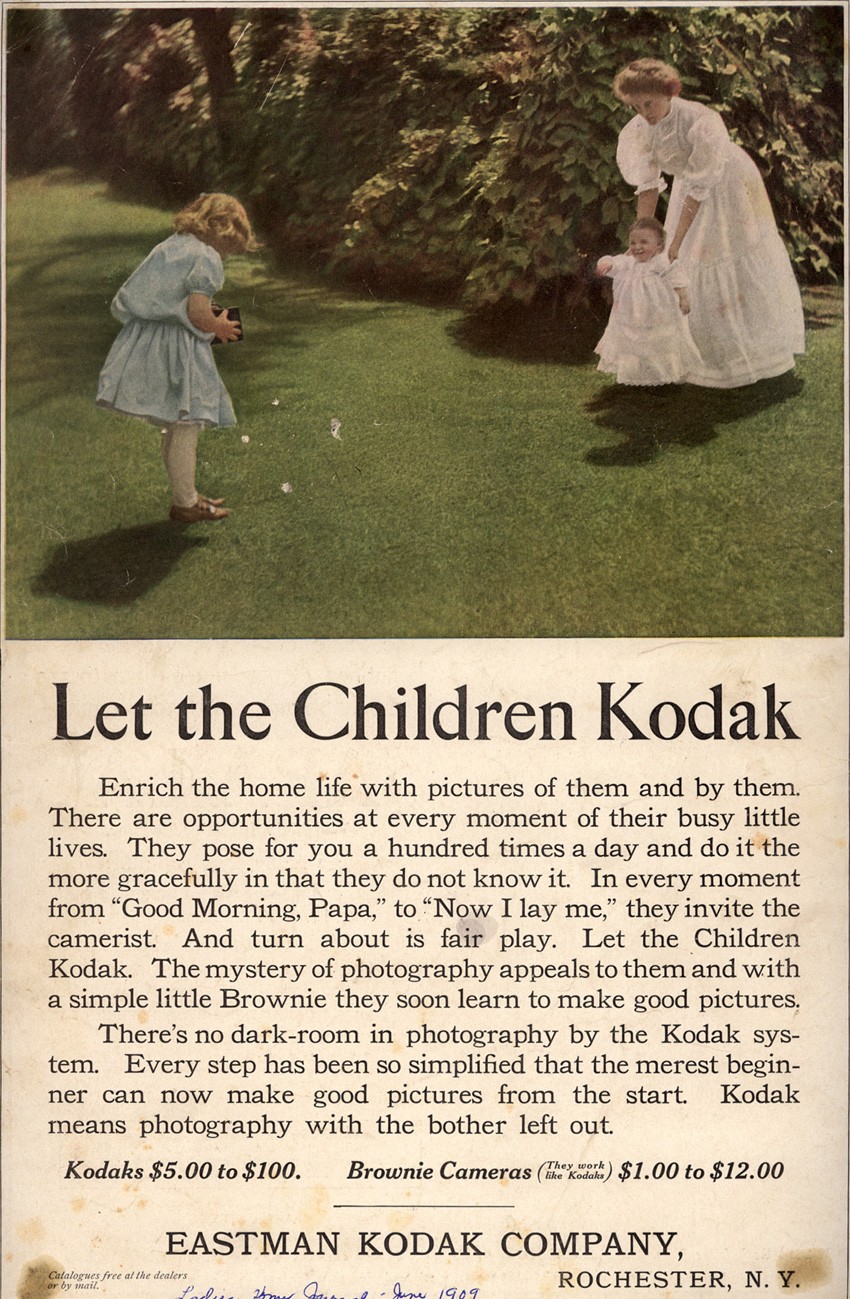Recognize the face? A teen model aiming her Kodak in a sheep field? If yes, please do tell. With her mystery my acknowledgment, I can say without hesitation it’s a snap getting sucked into the world of early Kodak advertising.
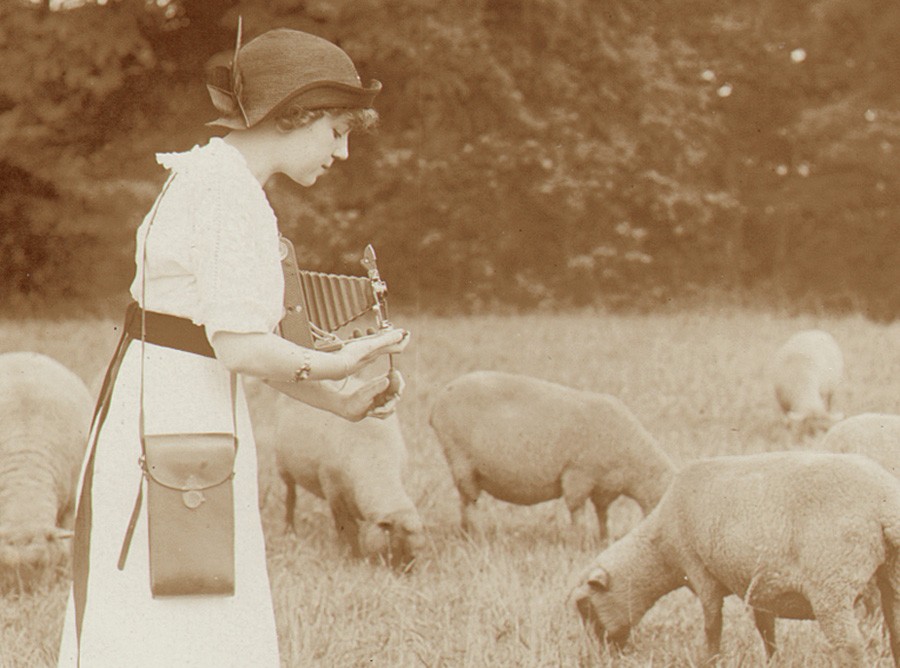
Detail: “Kodak Girl in Sheep Field” : vintage silver gelatin print: (8.7 x 11.6 cm) : ca: 1900-1920: by American (Philadelphia) photographer Edwin H. Fait: from: PhotoSeed Archive
As noted in this site’s previous post of their colorization of an early 1908 advertising contest winner by Marian Pearce of Waukegan, IL, Kodak’s marketing genius often took the form of “candid” views of models using cameras in the field: children taking pictures with a Brownie box variety, in the case of the Pearce winning photograph, or this silver gelatin print in the PhotoSeed Archive featuring a fashionably-dressed girl releasing the bulb shutter of what appears to be a model 3A Folding Pocket Kodak. (1.)
Similar to my discovery of the Pearce image used later in an advertisement, I’ve spent more than a few hours trying to decipher if this girl with chapeau was also published, but with no luck. Among multiple sources in the search process, I’ve come across a few notable online sites including the smile-inducing KodakGirl Collection (German publishing house Steidl releases this month their marvelous addition to Kodak scholarship: Kodak Girl: from the Martha Cooper Collection ) and revisited many pages from Duke University Libraries resource Emergence of Advertising in America currently showing 550 early Kodak advertisements.

Detail: verso: “Kodak Girl in Sheep Field”: graphite in unknown hand: “By Edwin H. Fait” | “Phila” | “Well known”: from: PhotoSeed Archive
But getting back to that face. I’ve tentatively dated this photograph from 1900-1920, and the commercial nature of the image suggests deliberate posing, with the model seen in profile holding her Kodak camera to nice effect. The carrying case is also stylishly displayed-consistent with vintage advertisements from this era- slung over her shoulder and resting on her hip. I may of course be wrong, but in addition to this young lady sharing a striking resemblance to very early known photos of her, (2.) and the intriguing abbreviated reference to the city of Philadelphia on the back of the photograph, Kodak Girl in Sheep Field may very well show American silent film actress and Philadelphia native Eleanor Boardman. (1898-1991)
The photographer, as I decipher on the back of the photo, was Edwin H. Fait. (see detail above) Boardman is acknowledged to have been one of the famous Kodak Girls, appearing in color on the cover of the 1921 Kodak catalogue, but perhaps not surprisingly when it comes to celebrity, research inconsistencies are rife. She is first believed to have begun modeling in 1913-1914, when she would have been 15 or 16 years of age-consistent with the dating for this photograph. A 1931 newspaper account stated:
About the time she finished art school, Miss Boardman began posing for commercial photographers. She became famous as the Kodak Girl and was the central figure in an advertising campaign which portrayed her snapping pictures in many localities. (3.)
Whatever her mysterious identity, this Kodak girl undoubtedly inspired others from the era to pick up a camera of their own.

Left: “Take a Kodak with you” : vintage advertisement from unknown 1912 issue of “Ladies Home Journal”: | Right: vintage advertisement: “Kodak as you go” : from: unknown source here published in 1921 but also used as cover art same year for annual Kodak catalogue: both: online resource: Emergence of Advertising in America: 1850-1920: Duke University David M. Rubenstein Rare Book & Manuscript Library
1. The 3A Folding Pocket Kodak was first introduced in 1903. Another possibility is that she holds a model 1A Special Kodak, which first came out in 1912.
2. Due to copyright considerations, I’ve elected not to show these here, although early portraits of Eleanor Boardman can be found doing common search engine image searches.
3. “Eleanor Boardman was Kodak Girl“: from: The Lewiston (ME) Daily Sun: October 15, 1931
